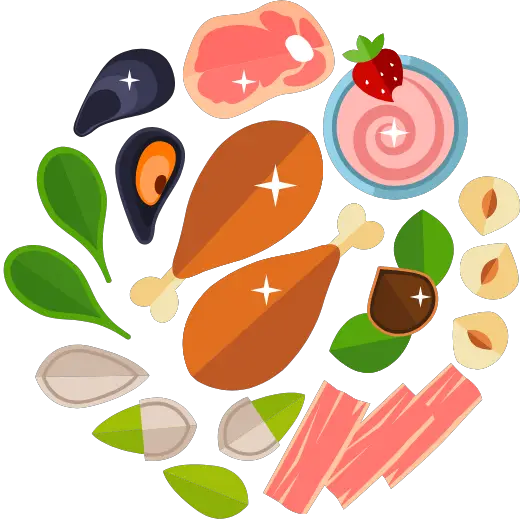To truly understand a country, one must taste it. In Korea, this journey of taste is a rich and varied exploration through what is poetically known as Paldo Gangsan—the mountains and rivers of the eight historical provinces. This phrase represents the entirety of the Korean peninsula, a land of dramatic mountain ranges, fertile plains, and three distinct coastlines. This diverse geography has cultivated a remarkable tapestry of regional cuisines, each with its own unique ingredients, flavor profiles, and cherished dishes.
Embarking on a culinary tour of Korea is more than just a search for a good meal; it is an opportunity to connect with the local history, climate, and the very soul of each region. This guide invites you to explore the representative foods of the peninsula, offering a roadmap to the distinct and delicious world of Korean regional cuisine. Let this be the start of your own flavorful journey.
The Refined and Subtle North: Pyeongyan & Hamgyeong Provinces
While these provinces are now part of North Korea, their culinary traditions have profoundly influenced the food of the entire peninsula and remain beloved in the South. The region’s cold, mountainous terrain fostered a cuisine that is generally milder and less spicy than its southern counterparts.
The quintessential dish from this area is Naengmyeon (cold buckwheat noodles). Pyongyang Naengmyeon is famous for its delicate, clear beef broth and springy buckwheat noodles, offering a subtle and deeply refreshing experience. In contrast, Hamhung Naengmyeon, made with chewy potato starch noodles, is typically served without broth (bibim naengmyeon) and mixed with a vibrant, spicy-sweet sauce, often topped with raw skate. Another northern specialty is Mandu (dumplings), which are characteristically large and filled generously with meat and vegetables, serving as a hearty meal to fend off the cold.
The Elegant Center: Gyeonggi & Chungcheong Provinces
Surrounding the capital of Seoul, the Gyeonggi province has long been the center of politics and culture, and its cuisine reflects this history. Influenced by the sophisticated fare of the royal court, Gyeonggi food is known for its moderate seasoning, elegant presentation, and clear, distinct flavors. A classic example is Seolleongtang, a rich, milky-white soup made from simmering ox bones for hours. It is a pure and comforting dish, seasoned by the diner at the table with salt, pepper, and scallions.
To the south lies Chungcheong province, a region of fertile plains and rolling hills. Its cuisine is characterized by simplicity and a focus on agricultural bounty. The people of Chungcheong prefer gentle, wholesome flavors. A beloved local dish is Kalguksu (hand-cut noodle soup), especially the version made with fresh clams (Bajirak Kalguksu), which features a savory, briny broth that is both simple and deeply satisfying. The region also makes excellent use of foraged ingredients, as seen in Dotorimuk, a savory acorn jelly salad that is a testament to the area’s rustic and natural culinary identity.
The Land of Abundance: Jeolla Province
Often hailed as the culinary heartland of Korea, Jeolla province in the southwest is blessed with fertile plains, a long coastline, and a warm climate. This abundance is reflected in its food, which is known for being bold, complex, and incredibly flavorful. Jeolla chefs are generous with their seasonings, skillfully using garlic, chili peppers, and a wide variety of jeotgal (fermented seafood) to create deep and memorable tastes.
This is the region to experience Hanjeongsik, the traditional Korean set meal. A Jeolla-style hanjeongsik is a spectacular sight, with a seemingly endless array of perfectly prepared banchan (side dishes) covering the entire table. The provincial capital, Jeonju, is the undisputed home of Bibimbap (mixed rice with vegetables and meat). Jeonju Bibimbap is a work of art, meticulously prepared with over a dozen high-quality local ingredients and rice cooked in a savory beef broth.
The Bold and Hearty Southeast: Gyeongsang Province
Gyeongsang province, located in the southeastern corner of the peninsula, has a cuisine shaped by its mountainous terrain and proximity to the sea. Due to the warmer climate, the food here tends to be saltier and spicier, as salt was traditionally used to preserve food for longer periods. The flavors are robust, direct, and deeply satisfying.
The coastal city of Busan is famous for Dwaeji Gukbap (pork and rice soup), a comforting and hearty dish with a rich pork broth that has nourished its residents for generations. Inland, the city of Andong offers Andong Jjimdak, a savory and slightly sweet braised chicken dish cooked with vegetables and glass noodles in a soy-based sauce. Its complex flavor profile—a perfect balance of savory, sweet, and spicy—has made it popular nationwide. Of course, with its long coastline, the region is also a prime destination for incredibly fresh hoe (raw fish).
The Unique Island Bounty: Jeju Province
As a volcanic island, Jeju has a culture and ecosystem entirely its own, and its cuisine is a direct reflection of this unique environment. Jeju food is characterized by its simplicity and its focus on highlighting the natural, intrinsic flavors of its ingredients. There is less reliance on heavy sauces or complex fermentation.
The island’s most famous specialty is Heuk Dwaeji (Jeju Black Pork). This local breed is prized for its rich flavor and chewy texture, and it is most often enjoyed simply grilled over charcoal. Another iconic dish is Gogi Guksu, a noodle soup with a rich, opaque pork broth that is a staple of the local diet. Surrounded by the sea, Jeju also boasts an incredible array of fresh seafood, showcased in dishes like Haemul Ttukbaegi (seafood hot pot) and Galchi Jorim (braised cutlassfish), allowing the fresh catch of the day to be the star.
From the subtle broths of the north to the bold spices of the southwest, Korean food offers a universe of flavors to discover. To taste the dishes of each province is to gain a deeper appreciation for the land and the people who have cultivated these traditions for centuries. We encourage you to step into this world and begin your own culinary tour—a delicious and rewarding journey awaits.
